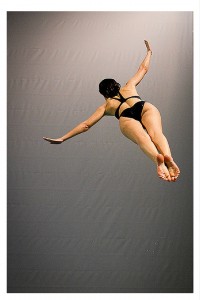 In the last post, I commented that the lifestyle of Pico Iyer—a travel writer who lives unplugged from nearly all Internet and telecommunication technology for months on end in his apartment in Kyoto, Japan—is fascinating, but probably not practical for the rest of us. Then, I wrote something about my own approach to putting moments of stillness and reflection into a busy daily life, by doing something outdoors on my own almost every day.
In the last post, I commented that the lifestyle of Pico Iyer—a travel writer who lives unplugged from nearly all Internet and telecommunication technology for months on end in his apartment in Kyoto, Japan—is fascinating, but probably not practical for the rest of us. Then, I wrote something about my own approach to putting moments of stillness and reflection into a busy daily life, by doing something outdoors on my own almost every day.
All of this got me thinking about how others, in particular people who spend their professional lives immersed in the fast-moving, nonstop world of high tech, are able to build some type of idleness into their hectic work (and personal) schedules.
Some years ago, I came across an example of someone at the other end of the spectrum from Pico Iyer: a woman thoroughly immersed in the world of technology who nonetheless has found an effective way to inject a measure of stillness into her daily life.
Esther Dyson is something of a Silicon Valley legend, a maven among high tech luminaries, with a long history as an investor and champion of the tech industry.
In 1997, she wrote the best-selling, widely translated book Release 2.0: A Design for Living in the Digital Age, a guide for making sense of modern technology and how to use it judiciously.
For more than 20 years, she edited the popular newsletter, Release 1.0, which was essential reading among Silicon Valley CEOs and Washington power-players. Widely recognized as a tech visionary, Dyson predicted—in the 1980s—that one day this thing called email would become a cornerstone of our daily communication, and also that one major downside would be all the spam we would receive. Her newsletter also warned readers about the potentially dangerous effects that a digital age might have on personal privacy, decades before the world had heard of Eric Snowden.
From 1977 to 2006, Dyson organized and ran PC Forum, an annual event that was renowned in digital circles for bringing together top industry leaders. It was there that a young Larry Page presented the search engine that would become Google, Mark Zuckerberg touted a new social network, and countless personal and professional relationships blossomed over late-night debates, poker games, or hot tub sessions. In the early years of PC Forum, a youthful Bill Gates rubbed shoulders with Steve Jobs. Gates would later comment that “PC Forum really helped the tech industry take off.”
Where does such a high tech icon take time out to find stillness, and do some reflection? As she has often stated, Dyson does her best thinking in swimming pools. In an April 2015 Wall Street Journal piece, she wrote: “Since I was 18, I have swum for 50 minutes every day, missing less than one day a year except for a two-week stint when I was training as a cosmonaut in Baikonur, Kazakhstan in March 2009. I don’t know much about meditation, but I suspect that this daily routine—more mental than physical—has kept me sane and balanced. I use it to think—about the day just past, what I did wrong or right, what I face today. Do I really want to take that trip to Mongolia? How to position the strategy change in the next board meeting? What to write for this column?”
According to her blog, Dyson goes to great lengths to organize a time to swim each day, in spite of a hectic travel schedule. For example, she always knows, or finds out, which airport hotels have the best pools. And, she never checks her pool gear when she flies, lest she be reduced to swimming in her underwear. Interestingly, physical fitness is not her goal. Rather, swimming provides her with a long moment of reflection: “It’s only the means to the real end: 50 minutes of uninterrupted time to think.”
Freeing her mind from life’s daily clutter allows her to think new thoughts, to make decisions, or to process her life experience: “It’s in the pool that I make decisions about whether to make a trip or an investment, or consider the results of past decisions. If I want to muse on how well or poorly I did at some task, cheer myself up or calm myself down, I use the 50 minutes to think without distraction from cell phones, reading material, email, phone calls, calendar updates, etc.”
Image: Flickr-user ivan dupont
